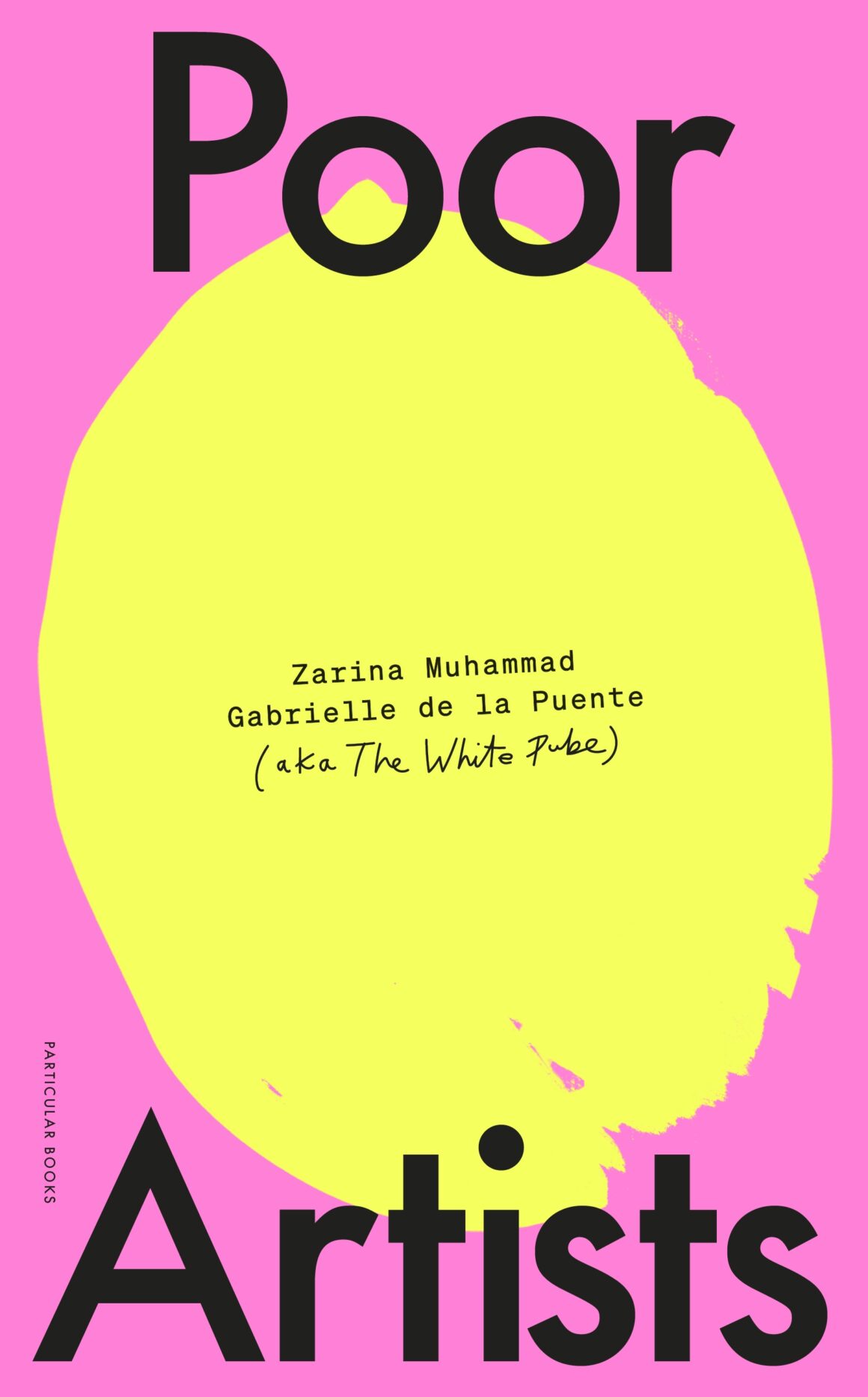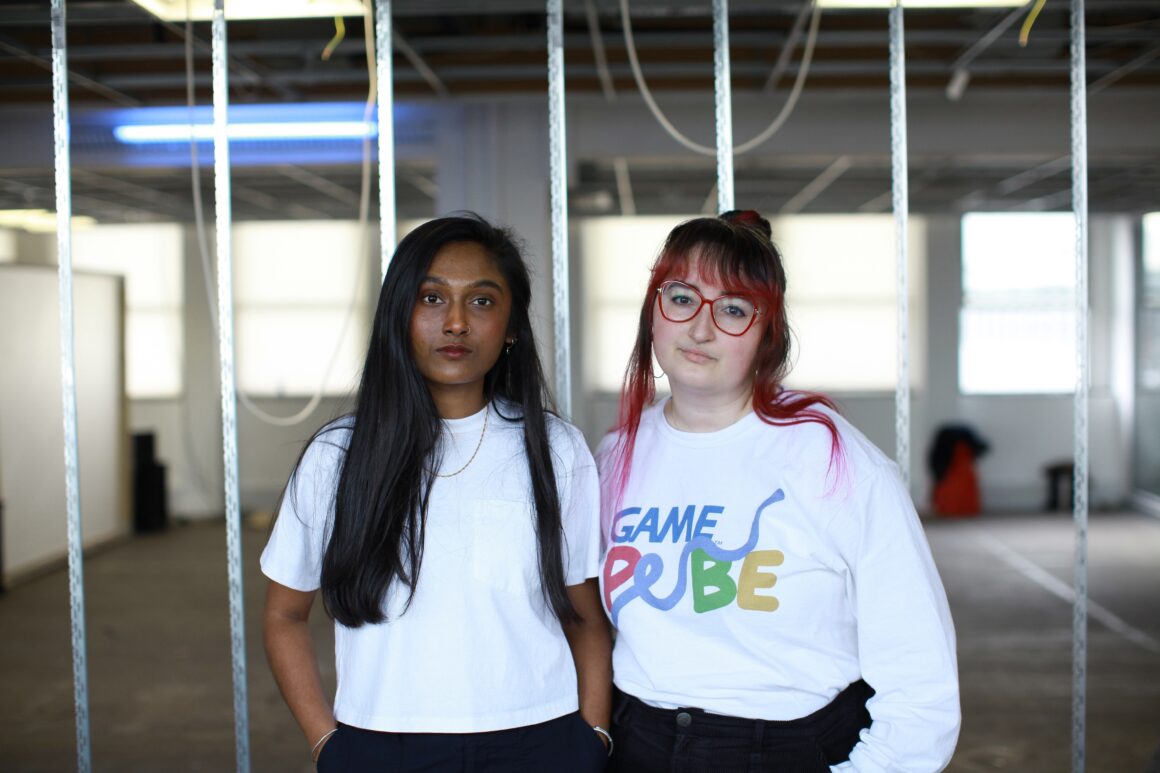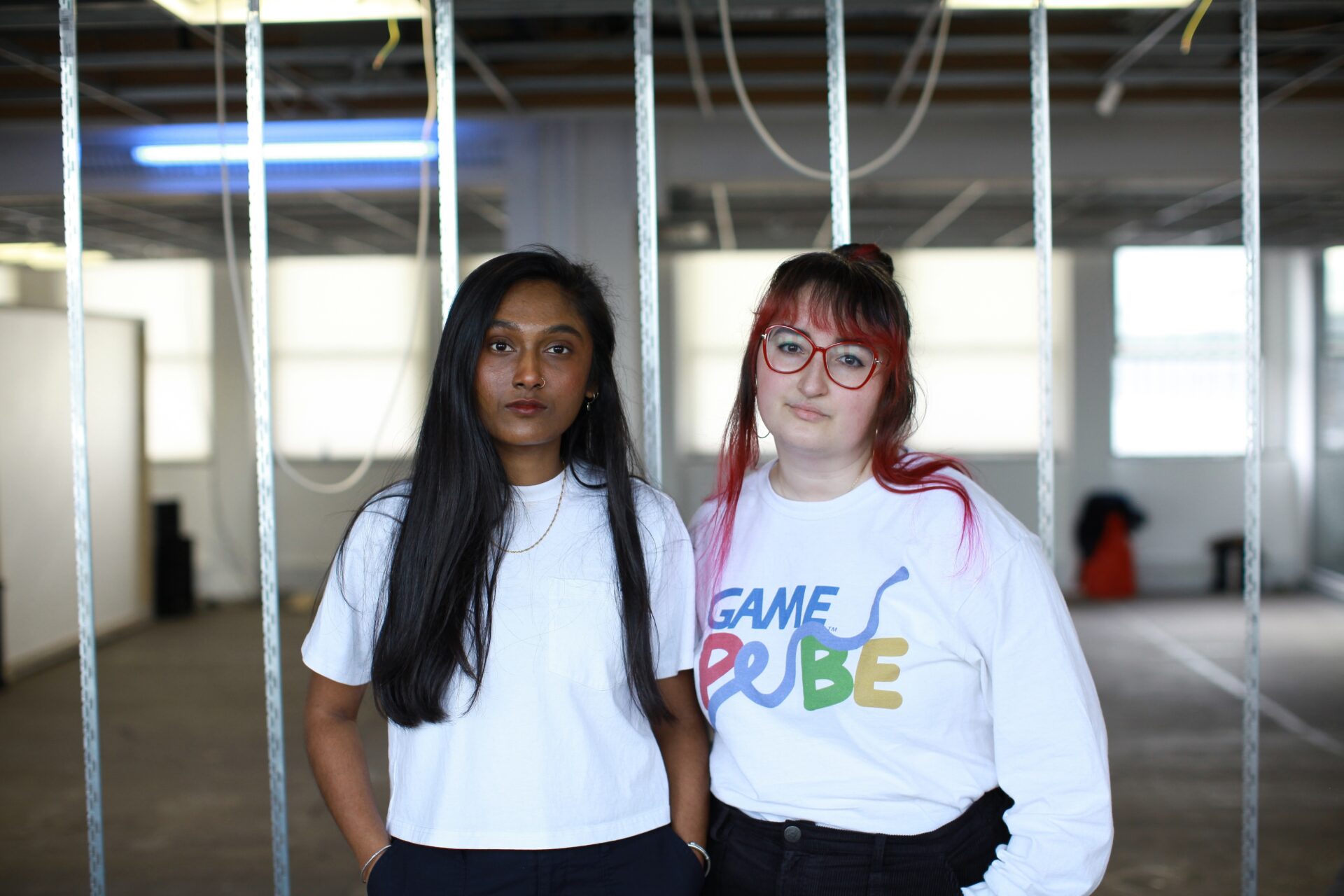The White Pube
Particular Books, 2024, 320 pp.
Poor Artists by The White Pube, the collaborative identity of Zarina Muhammad and Gabrielle de la Puente, is a compelling object. Its flamingo pink cover is a flamboyant addition to my bookcase. The London and Liverpool-based critics have been writing bombastic online criticism, filled with emojis, abbreviations, and feelings, since 2015 and graciously, this content has largely been free for readers to consume. Following nine years of producing weekly blog posts, reflecting on exhibitions, art institutions, and visual culture more broadly, the pair have published their first book with Particular Books, an imprint of Penguin. Poor Artists is a material translation of the online community they have earnestly created, capturing the agitator spirit they have come to represent for their readership.

The book narrates the endeavours of fictional art school graduate, Quest Talukdar, as they attempt to pursue a career as an artist after college. The difficulties of maintaining a creative life under capitalism are made immediately apparent to the protagonist. Grappling with the divide between the positives of art education and its frustrating incompatibility with societal structures, The White Pube expresses a similar criticism put forward by Claire-Louise Bennett in her novel, Checkout19 (Penguin Random House, 2021) which portrays the empty promises of the schooling system for working-class children. The core tension of Poor Artists – how we can live with art in our lives – remains largely unresolved, but I take some comfort in the fact that the protagonist ultimately decides to continue life as an artist, in spite of countless obstacles, and is buoyed by their reimagining of ‘success’ as simply being able to ‘make’.
The overt naming of the protagonist ‘Quest’ is one of many examples of the writers’ playful and expanded approach to criticism, which straddles different literary genres. The book is at times a memoir, with Quest an amalgamation of the authors’ own backgrounds, while also embracing fantasy and fiction, complete with tropes of quest-narratives, including a knight and king. A particularly enjoyable sequence analyses the role of art school in the development of criticality, with a surreal depiction of the head of the college as a pile of discarded artworks that its students have progressed through. At times, the writers eschew formalism altogether and embrace the polemical, with character monologues espousing opinions on topical conversations, from ableism to anarchism. The book is informed by interviews, conducted with anonymised individuals, artists, curators and gallerists, and this construction is evident in the strong opinions of different characters.
A critique levelled at Poor Artists by ArtReview suggests that publishing with a mainstream press like Penguin undercuts the book’s articulation of anarchist ideals.1 This seems misguided, given that we operate within particular power structures, and publishing is a method of disseminating ideas that can be activated. It is perhaps more productive to consider what it means to have this strange book – a hybrid of different writing styles – accepted by conventional media. Muhammad and de la Puente are both art school graduates, and while this is a well-established career path for many critics, I am intrigued by the creativity of this book.

The dematerialisation of the art object, as prognosed by Lucy Lippard in the 1970s, did not blanketly occur. However, Poor Artists highlights financial situations in determining the pursuit of material-focused or ‘dematerialised’ practices (de la Puente’s college loans are cited in footnotes throughout the narrative).
Oscar Wilde’s The Critic as Artist (1891) was an early originator of the school of thought that viewed criticism as an art form in and of itself, describing it as a “record of one’s own soul.” Poor Artists adopts this idea wholly by creating its own form and rationale. For many reasons, the fields of art writing and creative criticism have seen renewed interest in recent years. The general distribution of this book platforms these timely modes of creative expression for broader readerships to engage with and experience.
By converting the dominant ideas, discussed on their website and media channels, into the materiality of a book, The White Pube has created a talisman, a record of collective discordance with the opportunities for pursuing a life with art. In a way, the most appropriate review of this book would be to survey an array of practitioners – the eponymous ‘poor artists’ that the book seeks to champion and address. The interviews that inform the book demonstrate The White Pube’s community-oriented approach to criticism, with Poor Artists reaffirming their allegiance to their readership and the makers of the world.
Sarah Long is an artist and writer based in Cork.
sarahlongartist.com
1 Rosanna McLaughlin, ‘‘Poor Artists’ by Gabrielle de la Puente and Zarina Muhammad, Reviewed’, ArtReview, October 2024.



